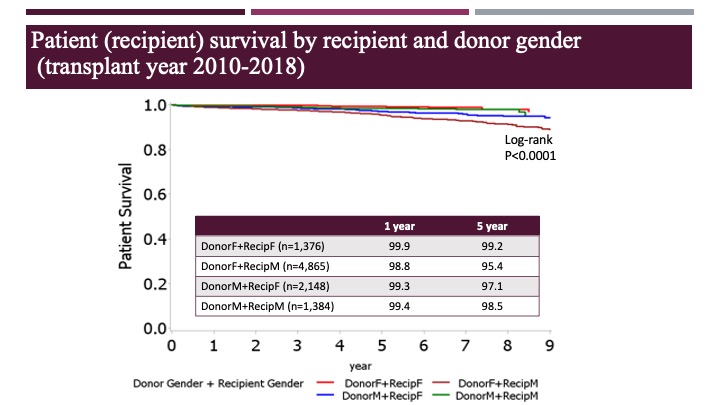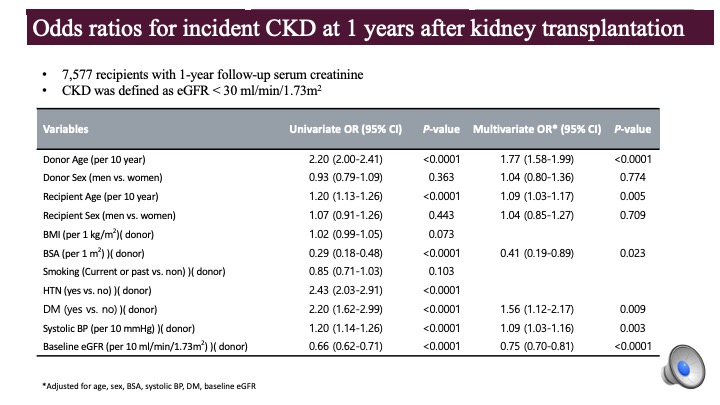Gender Imbalance in Kidney Transplantation in Japan
1Department of Urology, Juntendo University, Tokyo, Japan, 2Jichi Medical University, Tochigi, Japan, 3The Japan Society for Transplantation Gender Equality Committee, Tokyo, Japan, 4Department of Urology,, Juntendo University, Tokyo, Japan
Meeting: 2022 American Transplant Congress
Abstract number: 805
Keywords: Age factors, Renal function, Risk factors
Topic: Clinical Science » Kidney » 39 - Kidney Living Donor: Long Term Outcomes
Session Information
Session Name: Kidney Living Donor: Long Term Outcomes
Session Type: Poster Abstract
Date: Saturday, June 4, 2022
Session Time: 5:30pm-7:00pm
 Presentation Time: 5:30pm-7:00pm
Presentation Time: 5:30pm-7:00pm
Location: Hynes Halls C & D
*Purpose: Japan has a chronic shortage of donors. Therefore, kidney transplantation between elderly couples has increased. We examined how differences in gender and donor age are related to the prognosis of transplanted kidney using the registered data in Japan.
*Methods: We retrospectively examined 14,604 cases enrolled in JARTRE-W (JApan Renal Transplantation REgistry): from January 2010 to December 2019.
*Results: Female account for more than 60% of living-donor kidney transplants.However, in cadaveric kidney transplantation, the rate of brain death is higher in male , and more than 60% are male. Kidney transplantation from a female donor to a female recipient had the best prognosis, with a 5-year survival rate of 99.2%. On the other hand, kidney transplantation from female donors to male recipients had the worst prognosis, with a 5-year survival rate of 95.4%. Female recipients had a better prognosis for kidney transplant results, but the kidneys donated had a better prognosis for kidney transplants from male donors. We investigated CKD risk factors with an eGFR of 30 mi / min or less one year after 7577 cases in which Cr was confirmed after I year in Japanese living-donor kidney transplantation. Donor age, recipient age, donor body surface area, donor history of diabetes, donor history of hypertension, and Baseline eGFR were significant risk factors. Gender differences were not a significant risk factor.Male donors had significantly higher Body mass index and Body Surface Area than female donors, but had more smokers, hypertension and diabetes rate were high. Serum Cr and eGFR were better for female donors.
*Conclusions: Female recipients had a better prognosis for kidney transplant results, but the kidneys donated had a better prognosis for kidney transplants from male donors.Male donors are more smokers and have a higher rate of hypertension and diabetes, but the Body mass index and Body Surface Area are significantly larger.Physical disparity is likely to be involved in the prognosis of the transplanted kidney.Further analysis will be conducted in the future to consider coefficient calculation.
To cite this abstract in AMA style:
Nakagawa Y, Mieno M, Date H, Sasaki H, Takada Y, Ito T, Tanaka Y, Horie S, Ogasa D. Gender Imbalance in Kidney Transplantation in Japan [abstract]. Am J Transplant. 2022; 22 (suppl 3). https://atcmeetingabstracts.com/abstract/gender-imbalance-in-kidney-transplantation-in-japan/. Accessed December 28, 2025.« Back to 2022 American Transplant Congress


